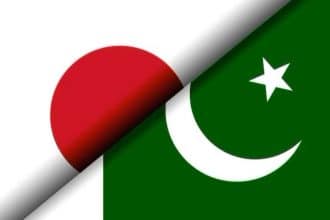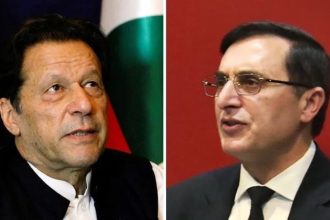The rupee has been left to the whims of the wild market forces to persuade the International Monetary Fund (IMF) to release funds, and gold prices in Pakistan roared to a new record high on Monday.
The price of gold (24 carats) increased by Rs 1,500 per tola and Rs 1,286 per 10 grams.
According to the All-Pakistan Sarafa Gems and Jewellers Association (APSGJA), the price of gold (24 carats) rose by Rs1,500 per tola and Rs1,286 per 10 grams to a final price of Rs210,500 per tola and Rs180,470 per 10 grams, respectively.
The jewelers’ association also claimed that local gold in Pakistan was “over cost” by Rs5,000 per tola compared to the bullion market in Dubai.
Dealers cited a record-breaking devaluation of the rupee and a sharp decline in the nation’s foreign exchange reserves as major factors causing the massive price increase in the bullion market. Dealers were already looking at the 200,000 per tola rate since the current price hike spree.
On Friday, the investors were only buying gold bars, not jewelry, which had reduced the profit margins for goldsmiths and put the labor force at risk of losing jobs as jewelry makers turned to other professions when they were unemployed.
According to a goldsmith, “there was a decline in people’s purchasing power as more people now use artificial jewelry,” Most gold producers are also moving toward artificial jewelry.
As investor attention shifted to several central bank meetings this week for more clarity on their rate hike strategies, with the U.S. Federal Reserve as the main focus, gold in the international market edged up on a weaker dollar.
Spot gold increased 0.1 percent to $1,928.36/ounce.
Han Tan, the chief market analyst at Exinity, said that as the US dollar and yields stabilize and markets eagerly await the Fed’s most recent policy guidance, gold is easing back from a nine-month high.
On February 1, market participants widely anticipated a 25-basis-point (bps) increase in interest rates from the US central bank after its two-day policy meeting.
After economic data showed signs of cooling U.S. inflation and U.S. consumer spending fell for a second consecutive month in December, it is anticipated that the Fed will slow its rate hikes, putting the economy on a lower growth path through 2023.
Gold, which does not pay interest, tends to benefit from low-interest rates, as it lowers the opportunity cost of holding bullion.






